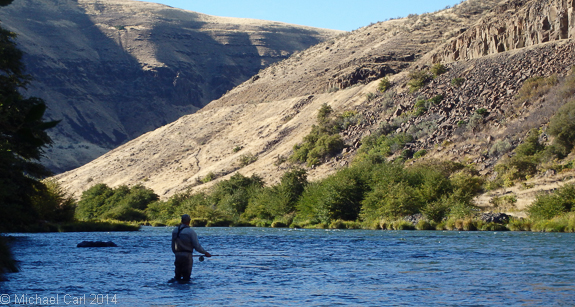The Ecological Angler
ecoangler.com
Hot Summer Steel on the Lower Deschutes
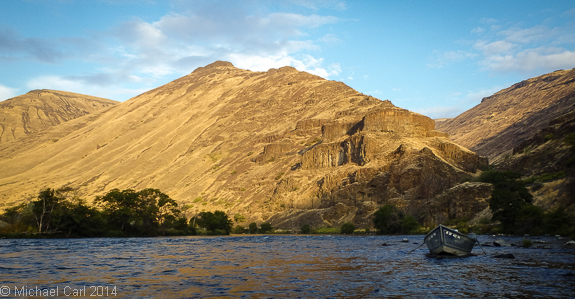
The Deschutes River begins high in the Cascade Mountains and tumbles down more than 4500 feet as it flows north to join the Columbia River. The watershed is renowned for its rocky desert canyons, and of course, its runs of salmon and steelhead.
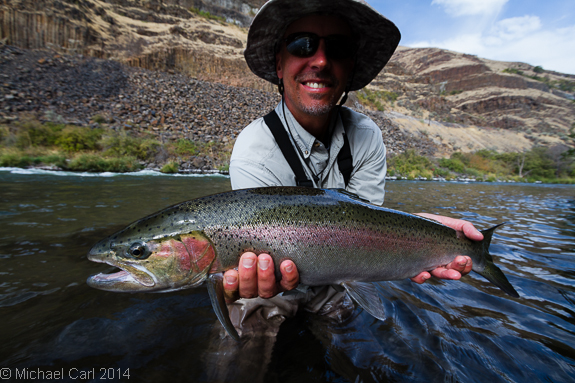
Adult summer steelhead begin entering the Deschutes River in June and the peak of the run is typically in September. Most of the fish from June to August can be found between the mouth of the Deschutes at river mile 0 to Sherars Falls at river mile 43. As the summer progresses, more and more steelhead pass over Sherars Falls. The peak of the run over Sherars Falls is mid to late September. By October, steelhead are spread throughout the lower 100 miles of the Deschutes.
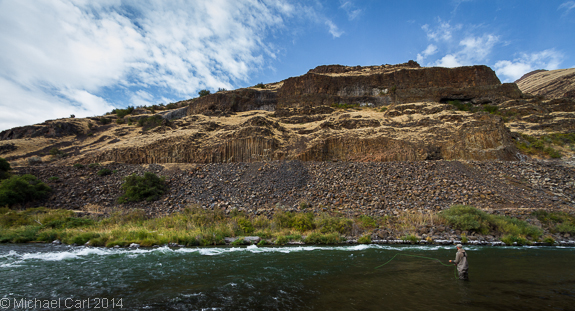
Hatchery steelhead can be differentiated in the Deschutes by examining their hatchery mark. Round Butte stock hatchery steelhead are uniquely marked with a adipose clip in combination with a maxillary clip. All hatchery marked steelhead observed in the Deschutes without these marks are considered out of basin hatchery strays. The Deschutes annually gets large numbers of out of basin hatchery strays that originate from hatcheries in the upper Columbia and Snake River basins. ODFW estimates that 50-90% of the total hatchery fish passing over Sherars falls are out of basin hatchery strays.
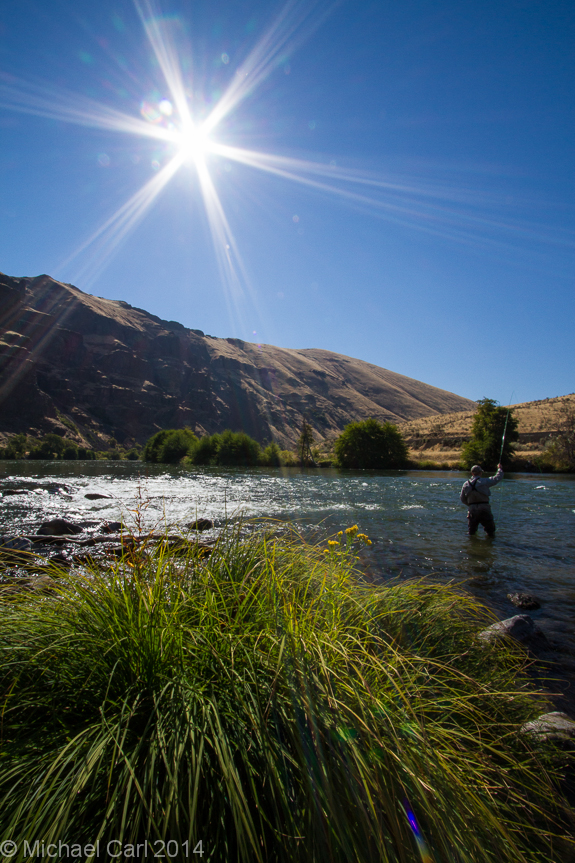
If you have fished the Deschutes since 2013, you've noticed changes in the summer water temperatures, the presence of brown algae, unreliable bug hatches and steelhead runs are later.
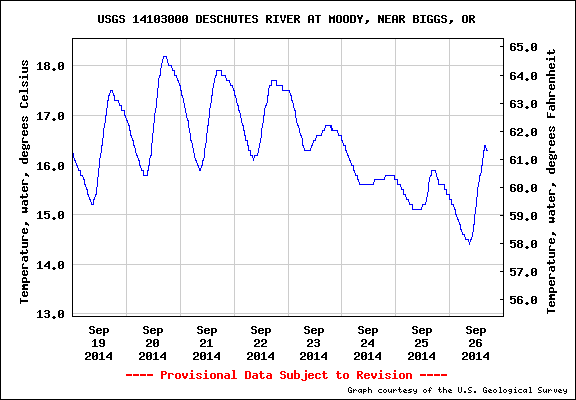
After years of complaints that a $130 million mixing tower in Round Butte Reservoir is raising water temperatures as well as changing the nature of the lower Deschutes River, Portland General Electric has begun studies to determine if there is any scientific basis for the fears. PGE will re-examine a water temperature and mixing formula for the tower. It also plans a two-year study of invertebrates in the lower 100 miles of the river to identify possible changes since the 230-foot tower went online in 2010. For the past four years, fishing guides and others in the lower Deschutes are objecting to unusually high water temperatures they say has altered the biology of one of Oregon's epic streams. Now the the guides and the rest of the public must wait for the mounting evidence to build.
